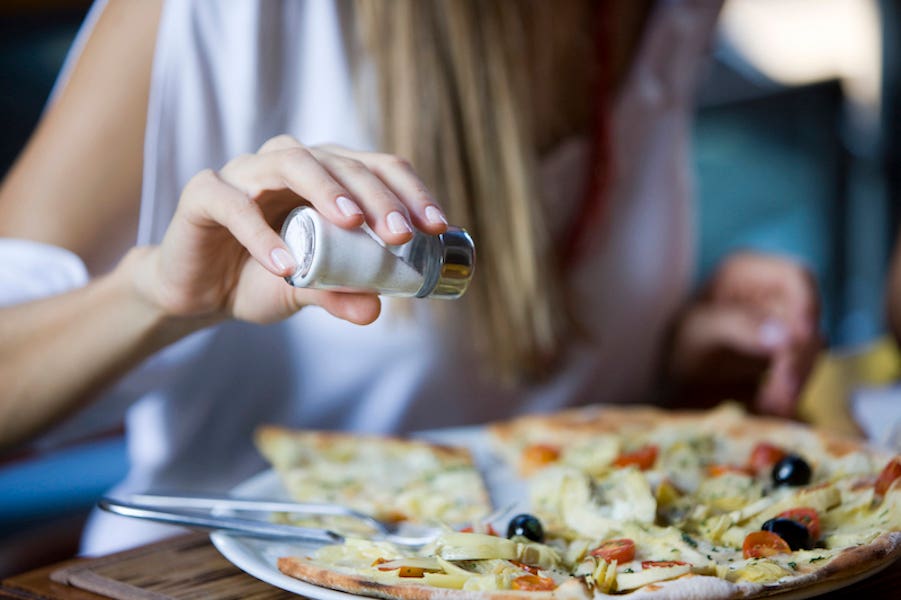Most people with heart disease consume too much salt, study finds
People with heart disease, who could benefit the most from a low-sodium diet, often consume more than double the recommended daily amount.

People with heart disease, who could benefit the most from a low-sodium diet, often consume more than double the recommended daily amount. (CREDIT: iStock Photos)
A recent study presented at the American College of Cardiology’s Annual Scientific Session reveals that individuals with heart disease, who could benefit the most from a low-sodium diet, often consume more than double the recommended daily sodium intake.
Sodium, while essential, can pose health risks when consumed excessively, including elevated blood pressure, which strains blood vessels and the heart. Excess sodium can also lead to fluid retention, worsening conditions like heart failure.
Table Salt Consumption
The U.S. Dietary Guidelines suggest limiting sodium intake to less than 2,300 mg/day for most adults, equivalent to about a teaspoon of table salt. However, individuals with cardiovascular diseases are advised to further restrict their intake to 1,500 mg/day.
This study examined data from over 3,100 people diagnosed with heart disease, revealing that 89% consumed more than the recommended maximum of 1,500 mg of sodium daily, with an average intake of over twice that amount.
Researchers emphasize that reducing sodium intake is crucial for preventing major adverse cardiovascular events. Lead author Dr. Elsie Kodjoe, an internal medicine resident at Piedmont Athens Regional Hospital, highlights the difficulty individuals face in adhering to low-sodium diets, even with the aid of food labels.
The study analyzed participants diagnosed with heart-related conditions such as heart attack, stroke, heart failure, coronary artery disease, or angina, using data from the National Health and Nutrition Examination Survey (NHANES) spanning 2009–2018.
Related Stories
Sodium intake was estimated through questionnaires where participants reported their 24-hour dietary intake. On average, individuals with cardiovascular disease consumed 3,096 mg of sodium daily, slightly lower than the national average reported by the U.S. Centers for Disease Control and Prevention.
Dr. Kodjoe notes the challenge of reducing sodium intake among individuals with heart disease compared to the general population.
She suggests practical solutions such as clearer food labeling and reducing sodium content in processed foods. Socioeconomic status did not significantly affect sodium intake, indicating a universal challenge in adhering to dietary guidelines.
Top 10 sources of sodium. (CREDIT: National Center for Chronic Disease Prevention and Health Promotion, Division for Heart Disease and Stroke Prevention)
To lower sodium intake, individuals are encouraged to prepare meals at home and scrutinize food labels, targeting items with less than 140 mg of sodium per serving. Increasing awareness of the benefits of sodium restriction could also boost adherence to guidelines, ultimately reducing cardiovascular disease-related hospitalizations and costs.
While the study relied on dietary recall questionnaires rather than gold-standard 24-hour urine sodium measurements, future studies using more accurate methods could provide further insights.
Sodium levels in some popular foods. (CREDIT: Cardiosmart / American College of Physicians)
NHANES has started incorporating urine sodium measurements, offering potential for more precise assessments of sodium intake among individuals with heart disease.
High sodium intake and other health conditions
Excessive sodium intake has also been linked to other conditions, such as:
heart failure
kidney problems and kidney stones
oedema (fluid retention)
stroke
stomach cancer
left ventricular hypertrophy (thickening of heart muscle)
osteoporosis.
A high level of salt intake increases the amount of calcium excreted in the urine, which may also contribute to osteoporosis and increased risk of fracture.
The balance of sodium and water in the body can also be disrupted if there is not enough water. This may be caused by a damaged thirst mechanism or by limited access to water. Hypernatremia is a very serious condition that occurs when your sodium blood levels rise above 145 milliequivalents per litre (mEq/L). It can lead to death. A major symptom is thirst and treatment usually involves controlled water replacement.
For more science news stories check out our New Discoveries section at The Brighter Side of News.
Note: Materials provided above by The Brighter Side of News. Content may be edited for style and length.
Like these kind of feel good stories? Get the Brighter Side of News' newsletter.
Joshua Shavit
Science & Technology Writer | AI and Robotics Reporter
Joshua Shavit is a Los Angeles-based science and technology writer with a passion for exploring the breakthroughs shaping the future. As a contributor to The Brighter Side of News, he focuses on positive and transformative advancements in AI, technology, physics, engineering, robotics and space science. Joshua is currently working towards a Bachelor of Science in Business Administration at the University of California, Berkeley. He combines his academic background with a talent for storytelling, making complex scientific discoveries engaging and accessible. His work highlights the innovators behind the ideas, bringing readers closer to the people driving progress.



